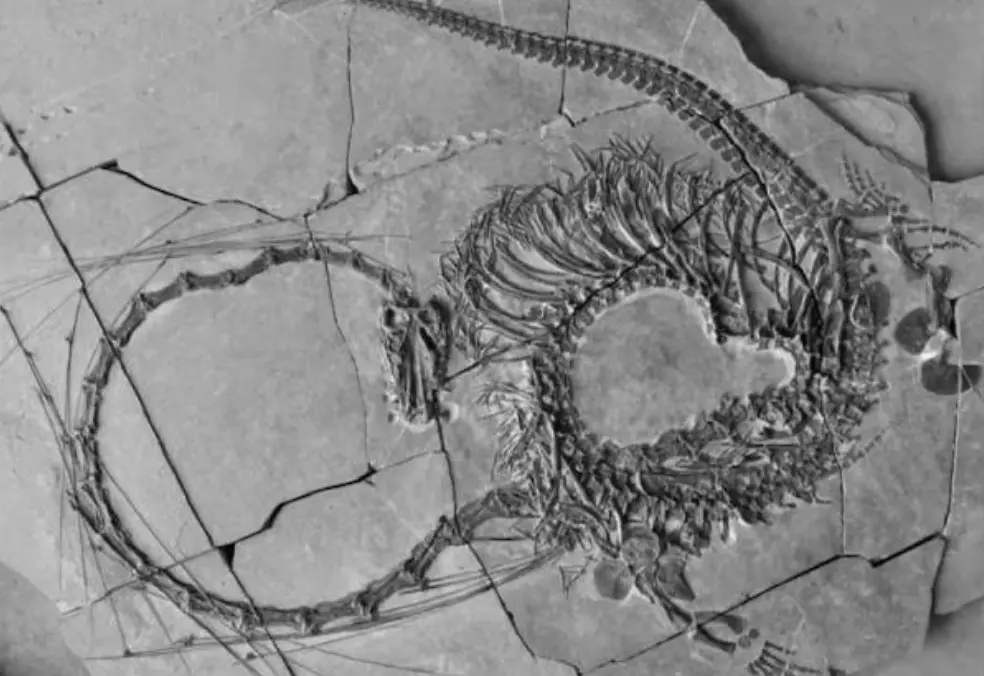Scientists reveal full anatomy of 240-million-year-old 'mythical Chinese dragon' fossil!
A 240-million-year-old marine reptile, resembling a mythical dragon and dubbed Dinocephalosaurus orientalis, has captured the fascination of scientists
image for illustrative purpose

A 240-million-year-old marine reptile, resembling a mythical dragon and dubbed Dinocephalosaurus orientalis, has captured the fascination of scientists after its complete anatomy was unveiled by researchers at the National Museums Scotland (NMS). Discovered in China's Guizhou Province nearly two decades ago, this five-meter-long creature from the Triassic period has long intrigued experts with its peculiar features, particularly its remarkably elongated neck.
The recent breakthrough, stemming from a decade-long study of newer specimens, sheds light on the creature's unique characteristics, including its serpent-like neck, which Dr. Nick Fraser, the Keeper of National Sciences at NMS, likened to that of a Chinese dragon. The fossils, initially identified in 2003 by Professor Li Chun from the Institute of Vertebrate Palaeontology and Palaeoanthropology in Beijing, have undergone meticulous analysis by an international team of researchers from Scotland, Germany, the USA, and China.
The most recent discovery, a fully articulated fossil, offers a comprehensive understanding of Dinocephalosaurus orientalis, showcasing its anatomy from "the tip of the nose right down to the tip of the tail," as described by Dr. Fraser.
One of the creature's most intriguing features is its 32 vertebrae, contributing to an exceptionally long neck. Speculation abounds regarding the function of this elongated neck, with Dr. Fraser admitting, "I'm still baffled by the function of the long neck," though suggesting it might have aided in probing rocks and crevices in water, possibly aiding in hunting.
Evidence found in the stomach region of one fossil, containing well-preserved fish, supports the theory that Dinocephalosaurus orientalis was well-suited for marine life. Its flippered limbs further bolster this hypothesis.
Notably, the long neck of Dinocephalosaurus orientalis invites comparisons to another mysterious marine reptile, Tanystropheus hydroides.
The findings, which have been published in the journal Earth and Environmental Science Transactions of the Royal Society of Edinburgh, mark a significant advancement in our understanding of prehistoric marine life.
This discovery underscores the importance of ongoing research efforts in unraveling the mysteries of ancient creatures and their ecosystems, providing invaluable insights into Earth's distant past.

